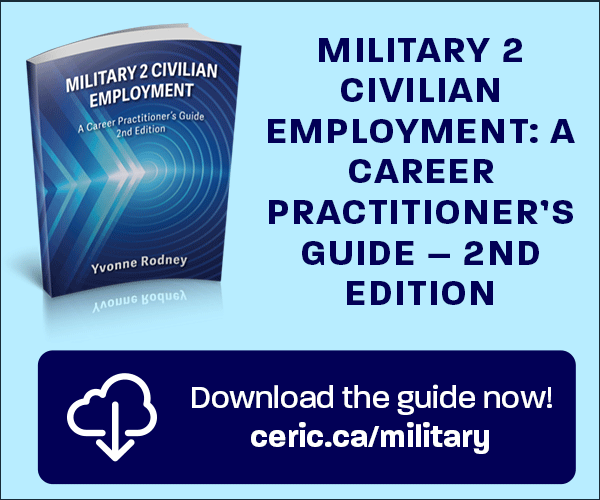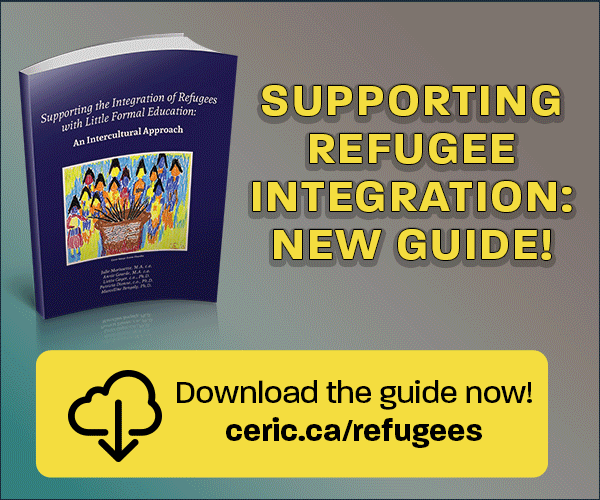Transitioning into, through, and out of Graduate School: A Theoretical Model
Keywords:
transition, graduate school, theoretical model, post-secondary, studentsAbstract
Recent years, graduate education has received increasing attention, but while extensive research has been conducted on the experiences of graduate students, scant literature has addressed the transitional pathways of those making the decision to attend graduate school, or those preparing either to leave or to graduate. The process by which students make the decision to apply for, enrol in and attend graduate school has not been well researched. A central aim of this paper, then, is to contribute to the sparse literature on graduate education transitions, giving consideration to and identifying influential factors thought to play a role in a student’s decisions to enrol and persist in graduate school. A theoretical model of graduate student transitions will be presented, developed through a synthesis of research on the persistence and attrition of undergraduate and graduate students. While it is acknowledged that the factors identified are in no way exhaustive of the many concerns and issues graduate students face in gaining entry, persisting and departing from their studies, it is hoped that this model will stimulate further discussion and prompt exploration into the most influential factors that help to shape their experiences and decisions; and the implications of these on career trajectories.
References
Association of Universities and Colleges of Canada (2002, September). University teaching capacity (Brief to the House of Commons Standing Committee on Finance). Ottawa: Author.
Astin, A.W. (1984). Student involvement: A developmental theory for higher education. Journal of College Student Personnel, 25(4), 297-308.
Astin, A.W. (1993). What matters in college? Four critical years revisited. San Francisco: Jossey-Bass.
Bean, J.P. (1980). Dropouts and turnover: The synthesis and test of a causal model of student attrition. Research in Higher Education, 12(2), 155-187.
Bean, J. P. (1983). The application of a model of turnover in work organizations. The Review of Higher Education, 6(2), 129-148Bean, J.P. (1990). Why students leave:
Insights from research. In: D. Hossler, and J.P. Bean (Eds.), The strategic management of college enrolments (pp.170-185). JosseyBass: San Francisco.
Bean, J.P., & Metzner, B.S. (1985). A conceptual model of nontraditional undergraduate student attrition. Review of Educational Research, 55(4), 485-540.
Benton, T.H. (2009). Graduate school in the humanities: Just don’t go. The Chronicle of Higher Education, January 30, 2009. Retrieved September 4, 2012 from https://chronicle.com/article/Graduate-School-inthe/44846/
Benton, T.H. (2010). The big lie about the life of the mind. The Chronicle of Higher Education, February 8, 2010. Retrieved September 4, 2012 from https://chronicle.com/ article/The-Big-Lie-About-the-Lifeof/63937/
Berger, J.B., & Milem, J.F. (2000). Organizational behaviour in higher education and student outcomes. In J.C. Smart (Ed.), Higher education: Handbook of theory and research (pp. 268-338). Agathon Press: New York, Vol. XV.
Braxton, J. M., & Hirschy, A. S. (2004). Reconceptualizing antecedents of social integration in student departure. In M. Yorke & B. Longden (Eds.), Retention and student success in higher education (pp. 89–102).
Bodmin, Great Britain: MPG Books. Breen, R., & Jonsson, J.O. (2000). Analyzing educational careers: a multinomial transition model. American Sociological Review, 65(5), 754-772.
Cabrera, A.F., Castaneda, M.B., Nora, A., & Hengstler, D. (1992). The convergence between two theories of college persistence. Journal of Higher Education, 63(2), 143-164.
Cabrera, A.F., Nora, A., & Castaneda, M.B. (1993). College persistence: structural equations modeling test of an integrated model of student retention. Journal of Higher Education, 64(2), 123-139.
Canadian Association for Graduate Studies (2011). 39th Statistical Report 1999-2008. Ottawa: Author.
Canadian Association of University Teachers (2010). CAUT Almanac of Post-Secondary Education in Canada, 2010-2011. Ottawa: Canadian Association of University
Teachers.
Chickering, A.W., & Reisser, L. (1993). Education and identity (2nd ed.). San Francisco: Jossey-Bass.
Cockrell, C.N., & Shelley, K. (2011). The relationship between academic support systems and intended persistence in doctoral education. Journal of College Student Retention, 12(4), 469-484.
Conn, P. (2010). We need to acknowledge the realities of employment in the humanities. The Chronicle of Higher Education, April 4, 2010. Retrieved September 4, 2012 from https://chronicle.com/article/WeNeed-to-Acknowledge-the-/64885/
Council of Graduate Schools. (2008). Ph.D. completion and attrition: Analysis of baseline program data from the Ph.D. completion project. Washington, DC: Author.
DiMaggio, P., & Mohr, J. (1985). Cultural capital, educational attainment, and marital selection. American Journal of Sociology, 90(6), 1231-59.
Dunn, M.S., & Forney, D.S. (2004). Using entertainment media to inform student affairs teaching and practice related to student development theory. New Directions for Student Services, 108, 13-23.
Ehrenberg, R.G., Zuckerman, H., Groen, J.A., & Brucker, S.M. (2010). Educating scholars: Doctoral education in the humanities. Princeton; Oxford: Princeton University Press.
Elgar, F.J. (2003). Ph.D. degree completion in Canadian universities: Final report. Halifax: Graduate Students Association of Canada.
Ethington, C.A., & Smart, J.C. (1986). Persistence to graduate education. Research in Higher Education, 24(3), 287-303.
Evans, N.J., Forney, D.S., & GuidoDiBrito, F. (1998). Student development in college: Theory, research, and practice. San Francisco: Jossey-Bass.
Gansemer-Topf, A.M., Ross, L.E., & Johnson, R.M. (2006). Graduate and professional student development and student affairs. New Directions for Student Services, 115, 19-30.
Gardner, S.K. (2009). The development of doctoral students: Phases of challenge and support. ASHE Report, 34(6), 1-126.
Gardner, S.K., & Barnes, B.J. (2007). Graduate student involvement: Socialization for the professional role. Journal of College Student Development, 48(4), 369-387.
Gilardi, S., & Guglielmetti, C. (2011). University life of non-traditional students: Engagement styles and impact on attrition. The Journal of Higher Education, 82(1), 33-53.
Golde, C.M. (2005). The role of the department and discipline in doctoral student attrition: Lessons from four departments. The Journal of Higher Education, 76(6), 669-700.
Goyette, K.A., & Mullen, A.L. (2002, August). College for what? Social background and the choice and consequences of liberal arts or preprofessional fields of study. Paper presented at the annual meeting of the American Sociological Association, Chicago.
Hayden, M.L. (2008). Parental influence on graduate school aspirations among first generation and non-first generation college students attending highly selective institutions. (Unpublished doctoral dissertation). Virginia Polytechnic Institute and State University, Blacksburg, VA.
Hildebrandt, D. (2011). Perceived impact of social network sites on online doctoral students’ sense of belonging. (Unpublished doctoral dissertation). Walden University, Minneapolis, MN.
Hossler, D., & Gallagher, K. S. (1987). Studying student college choice: A three phase model and implications for policy-makers. College and University, 2(3), 207-221.
Junor, S., & Usher, A. (2008). Student mobility & credit transfer: a national and global survey. Virginia Beach, VA; Toronto, ON: Educational Policy Institute.
Le, T., and Gardner, S. K. (2007, November). Understanding the doctoral experience of Asian international students in the STEM fields: An exploration of one institutional context. Paper presented at an annual meeting of the Association for the Study of Higher Education, Louisville, KY.
Lehker, T., & Furlong, J.S. (2006). Career services for graduate and professional students. New Directions for Student Services, 115, 73-83.
Leach, J. (2011, May). Defending the liberal arts. Speech given by Jim Leach, Chairman of the National Endowment for the humanities, at the American Council of Learned Societies Annual Meeting, Washington, D.C., May 6, 2011. Retrieved September 4, 2012 from http://www.neh.gov/about/chairman/speeches/defending-the-liberal-arts
Lovitts, B.E. (2001). Leaving the ivory tower: The causes and consequences of departure from doctoral study. Lanham, MA: Rowman & Littlefield Publishers, Inc.
Mare, R.D. (1980). Social background and school continuum decisions. Journal of the American Statistical Association, 75(370), 295-305.
Mastekaasa, A. (2006). Educational transitions at graduate level: Social origins and enrolment in PhD programmes in Norway. Acta Sociologica, 49(4), 437-453.
McEwen, M.K. (2005). The nature and uses of theory. In M.E. Wilson & L. Wolf-Wendel (Eds.), ASHE reader on college student development theory (pp.5-24). Boston, MA: Pearson Custom Publishing.
Moss, G. (2005). Cultural capital and graduate student achievement: A preliminary quantitative investigation. Electronic Journal of Sociology. Retrieved September 4, 2012 from http://www.sociology.org/content/2005/tier1/moss.html
Mullen, A.L., Goyette, K.A., & Soares, J.A. (2003). Who goes to graduate school? Social and academic correlates of educational continuation after college. Sociology of Education, 76(2), 143-169.
Offerman, M. (2011). Profile of the nontraditional doctoral degree student. New Directions for Adult and Continuing Education, 129, 121-130.
Park, C.L., Perry. B., & Edwards, M. (2011). Minimising attrition: Strategies for assisting students who are at risk of withdrawal. Innovations in Education and Teaching International, 48(1), 37- 47.
Perna, L.W. (2004). Understanding the decision to enroll in graduate school: Sex and racial/ethnic group differences. The Journal of Higher Education, 75(5), 487-527.
Perna, L. W. (2006). Studying college choice: A proposed conceptual model. In J. C. Smart (Ed.), Higher education: Handbook of theory and research (Vol. 20). Dordrecht, The Netherlands: Kluwer.
Polson, C. J. (2003). Adult Graduate Students Challenge Institutions to Change. In D. Kilgore and P. J. Rice (eds.),Meeting the Needs of Adult Students. New Directions for Student Services, no. 102. San Francisco: Jossey-Bass, 2003.
Rendon, L.I., Jalomo, R.E., & Nora, A. (2000). Theoretical considerations in the study of minority student retention in higher education. In J.M. Braxton (Ed.), Reworking the student departure puzzle (pp.127-156).
Nashville, TN: Vanderbilt University Press. Ross, K. U. (2010). The effect of institutional merit-based aid on student aspirations, choice and participation: A mixed methods approach. (Unpublished doctoral dissertation), Simon Fraser University.
Schlossberg, N.K., Lynch, A.Q., & Chickering, A.W. (1989). Improving higher education environment for adults: Responsive programs and services from entry to departure. San Francisco, CA: Jossey-Bass.
Seidman, A. (2005). (Ed.). College student retention: Formula for student success. Westport, CT: American Council on Education and Praeger Publishers.
Stolzenberg, R.M. (1994). Educational continuation by college graduates. American Journal of Sociology, 99(4), 1042-77.
Strange, C.C. (2010). Theoretical foundations of student success. In D.H.Cox & C.C. Strange (Eds.), Achieving student success: Effective student services in Canadian higher education (pp.18-32). Montreal; Kingston; London; Ithaca: McGillQueen’s University Press.
Sweitzer (Baker), V. (2009). Towards a theory of doctoral student professional identity development: A developmental networks approach. The Journal of Higher Education, 80(1), 1-33.
Thomas, S. (2000). Ties that bind: A social network approach to understanding student integration and persistence. The Journal of Higher Education, 71(5), 591-615.
Tinto, V. (1975). Dropout from higher education: A theoretical synthesis of recent research. Review of Educational Research, 45(1), 89-125.
Tinto, V. (1993). Leaving College: Rethinking the causes and cures of student attrition (2nd ed). Chicago: The University of Chicago Press.
Titus, M.A. (2004). An examination of the influence of institutional context on student persistence at 4-year colleges and universities: A multilevel approach. Research in Higher Education, 45(7), 673-699.
Weidman, J.C. (1989). Undergraduate socialization: A conceptual approach. In: J.C. Smart (Ed.), Higher Education: Handbook of theory and practice (Vol.V) (pp.289-322). Agathon: New York.
Weidman, J.C., Twale, D.J., & Stein, E.L. (2001). Socialization of graduate and professional students in higher education: A perilous passage? ASHE-ERIC Higher Education Report, 28(3), San Francisco, CA: Josssey-Bass.
Wendler, C., Bridgeman, B., Cline, F., Millett, C., Rock, J., Bell, N., and McAllister, P. (2010). The Path Forward: The Future of Graduate Education in the United States.
Princeton, NJ: Educational Testing Service.
Williams-Tolliver, S.D. (2010). Understanding the experiences of women, graduate student stress, and lack of marital/social support: A mixed method inquiry. (Unpublished Doctoral Dissertation). Capella University, Minneapolis, MN.
Zhao, C-M., Golde, C.M., & McCormick, A.C. (2005). More than a signature: how advisor choice and advisor behaviour affect doctoral student satisfaction. Paper prepared for the conference of the American Educational Research Association, Montreal, Quebec, April 12, 2005.

Downloads
Published
How to Cite
Issue
Section
License

This work is licensed under a Creative Commons Attribution-NonCommercial-NoDerivatives 4.0 International License.
















